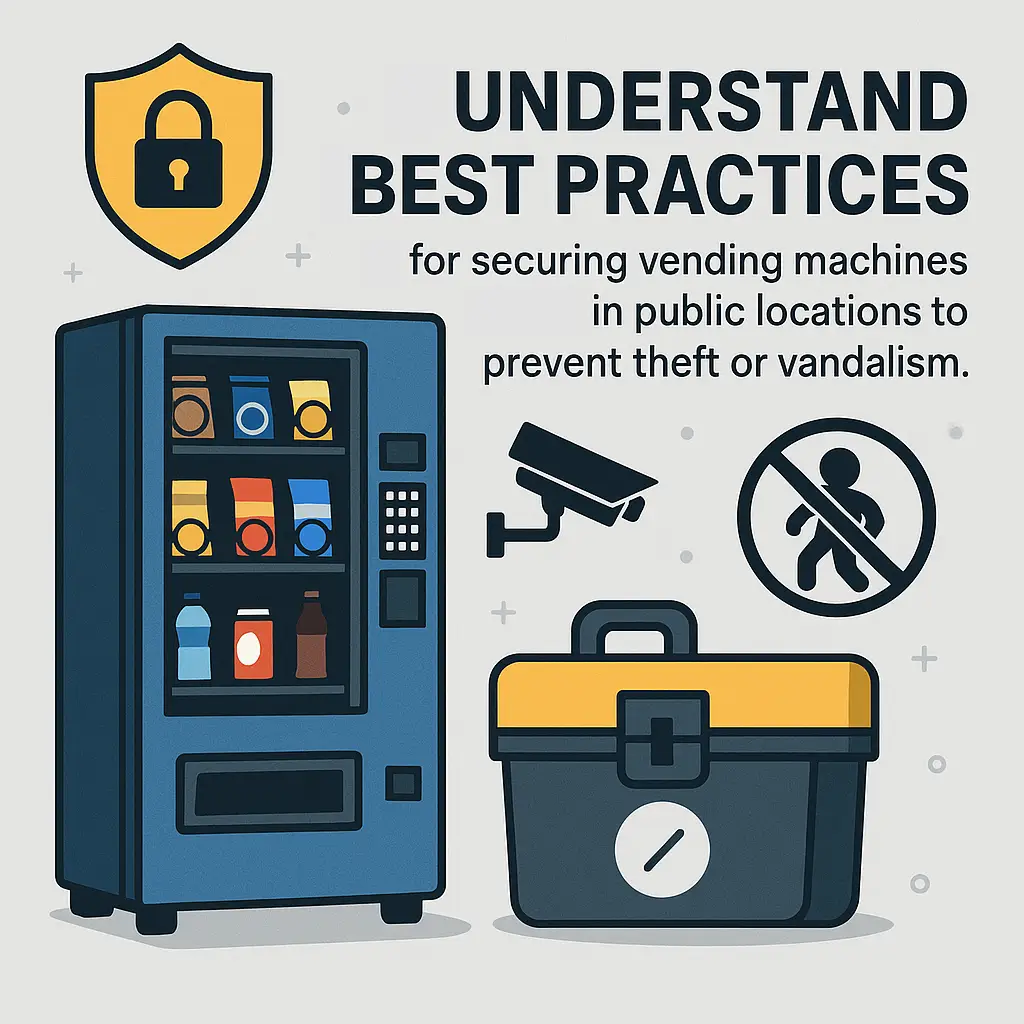Security for Vending Machines in Public Buildings
Understand best practices for securing vending machines in public locations to prevent theft or vandalism.
Back to Vending for Public Buildings ResourcesUnderstand best practices for securing vending machines in public locations to prevent theft or vandalism.
Back to Vending for Public Buildings ResourcesWell-planned placement, physical locks, and monitoring systems can prevent damage, reduce theft, and ensure uninterrupted service in public spaces.
![]() Strategic placement reduces theft and increases machine safety.
Strategic placement reduces theft and increases machine safety.
![]() Security features deter tampering and vandalism attempts.
Security features deter tampering and vandalism attempts.
![]() Regular checks and monitoring keep operations smooth and secure.
Regular checks and monitoring keep operations smooth and secure.

Vending machines in public buildings face unique security challenges. With extended operating hours and diverse visitor traffic, these machines can be vulnerable to theft, vandalism, or misuse. Implementing a comprehensive security plan protects assets, maintains service reliability, and enhances the overall visitor experience.
One of the most effective ways to reduce security risks is through thoughtful placement. Positioning machines in well-lit, highly visible areas discourages tampering. Placing units near entrances, lobbies, or security desks ensures they remain within view of staff and surveillance systems. Selecting machines with reinforced locks, tamper-resistant doors, and secure payment systems adds another layer of protection.
Modern security tools help facilities monitor vending zones effectively. Surveillance cameras positioned to capture clear views of the machines act as a deterrent and provide valuable footage in the event of incidents. Many public facilities also use controlled access zones to limit who can approach machines after hours. This is particularly important in buildings with 24/7 staff or visitors, where unsupervised access could pose risks.
Proper lighting is a simple but critical security measure. Well-lit areas deter vandalism and make users feel safer. Regular maintenance schedules also help identify damage or tampering early. Establishing clear reporting and response procedures ensures issues are addressed promptly, minimizing downtime and loss.
For tips on managing multiple machines efficiently, explore this article on vending logistics.
Contactless payment systems reduce the need for cash, lowering theft risk. Some machines include alert systems that notify teams of forced entry or damage. By combining these technologies with strong physical security, facilities can maintain consistent service even in high-traffic environments.
Facilities interested in sustainable and secure solutions may also find value in this resource on eco-friendly vending options.
If you're exploring vending options for your business, Vending Exchange can help simplify the process. Delivery, Installation and Equipment is provided at no cost to you - vendors provide the machines, keep them stocked, and handle all servicing. Whether you need a provider or full-service management, just fill out the form on this page to get started.
The most frequent issues include theft attempts, vandalism, tampering with payment systems, and break-ins during off-hours.
Locating machines in visible, high-traffic areas near security cameras or staff helps deter unwanted activity.
Reinforced locks, tamper-proof designs, and alarm systems make machines harder to break into.
Yes. By reducing or eliminating cash storage, these systems make machines less attractive targets for theft.
Surveillance increases accountability and discourages damage by ensuring activities are monitored and recorded.
Check locks, screens, payment systems, and surrounding areas for signs of tampering or damage.
Some jurisdictions require compliance with facility security standards and ADA guidelines, which may include placement or locking mechanisms.
Using motion sensors, alarms, or integrating machines into the building’s security system helps protect equipment when no staff are present.
Report incidents immediately, document the damage, and adjust placement or security measures to prevent recurrence.
Regular checks should be scheduled, with additional inspections after holidays, busy periods, or security alerts.